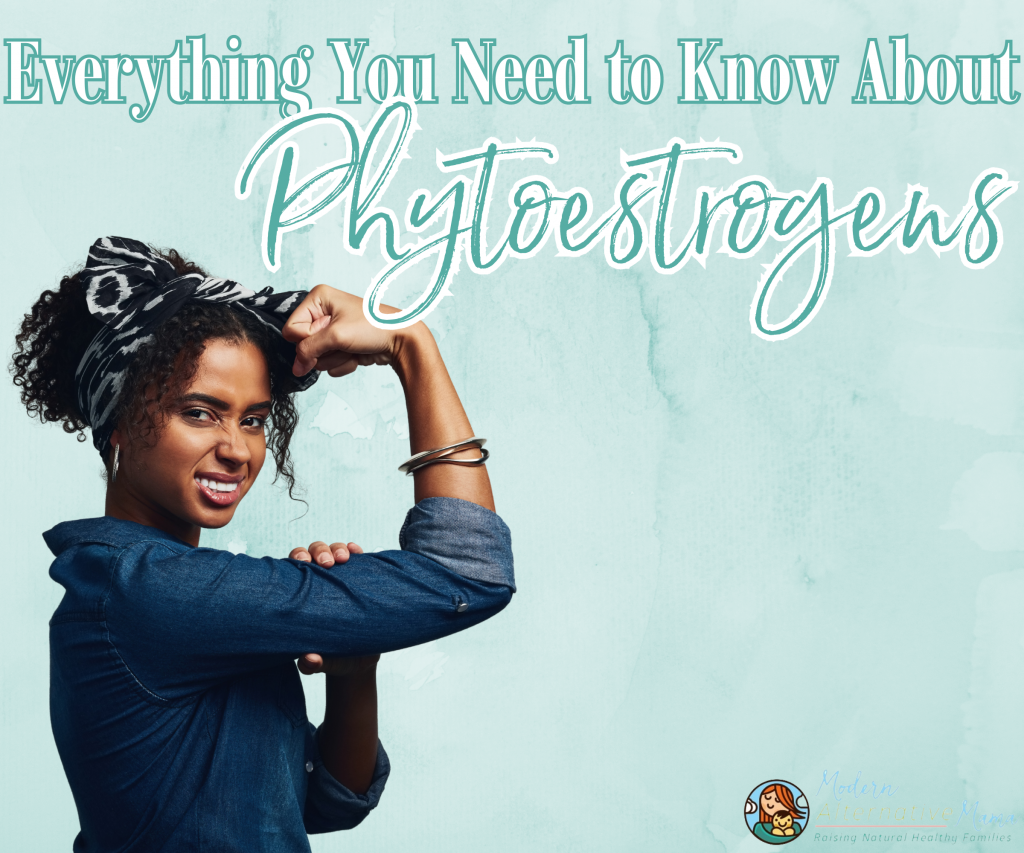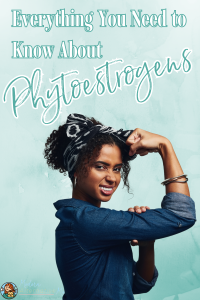Imagine being a 30-year-old woman, diagnosed with hormonal acne, and never once taking a moment to learn about the hormones in your body – that was me!
Until recently, I honestly just ignored my hormonal irregularities (to the best of my ability). Since my pre-teen years, I have always had irregular and, quite frankly, just awful menstrual cycles. As I grew older, in my early 20s, I started getting complex ovarian cysts that ruptured monthly. In my mid-20s, for the first time in my life, I started to get acne, more specifically, hormonal acne.
The doctors tried to put me on birth control, but I was aware of the risk associated with birth control, so I declined. However, they put me on a permanent antibiotic, which I took for years before stopping. They never told me that there were foods that could do the same thing as the medications they prescribed me. So today, we will discuss a hormone-balancing food compound – phytoestrogen.
What Are Phytoestrogens
Phytoestrogens are plant-derived estrogen-like compounds structurally similar to 17β-estradiol, the predominant circulating estrogen in women (1). Studies show phytoestrogens can benefit reproductive health, heart health, weight loss, hormone-dependent tumors, bone and skin health, the immune system, and more. Four phenolic compounds are classified as phytoestrogens – iIsoflavones, stilbenes, coumestans, and lignans (2).
IIsoflavones are plant-based compounds found almost exclusively in beans, like soybeans, that mimic the action of the hormone estrogen (3).
Stilbenes are a large class of plant secondary metabolites belonging to polyphenols that are widely distributed in food and medicinal plants (4)
Coumestans are plant-derived polycyclic aromatic secondary metabolites in soybeans, clover, alfalfa sprouts, sunflower seeds, spinach, and legumes (5).
Lignans are polyphenolic compounds in plant-based foods like seeds, whole grains, legumes, fruit, and vegetables (6).
Benefits of Phytoestrogens
If you read our article How to Eat for Your Menstrual Cycle, you know there are times in a woman’s 28-day cycle when estrogen decreases. This is where phytoestrogens come in, but first, let’s discuss their benefits and how to incorporate them.
May Improve the Appearance of Acne
Acne is a condition that occurs when your hair follicles become clogged with dead skin cells and oil (7). A systematic review of over 1000 studies found that patients with acne had lower serum estrogen levels than the control groups (8). With that said, and the risk of hormonal acne from too much testosterone, adding phytoestrogens with anti-androgen properties could be beneficial.
Some foods and herbs with phytoestrogenic and anti-androgenic properties include:
- Flaxseeds (9,10)
- Licorice root (11,12) – check out our licorice root herbal profile
- Nuts (13,14)
- Reishi mushroom (15,16) – check out our reishi herbal profile
- Spearmint (17) – check out our spearmint herbal profile
May Relieve Menstrual Pain
Around 80% of women experience menstrual cramps or pain at some stage in their lifetime (18); thankfully, phytoestrogenic foods may help. During the menstruation phase of a woman’s cycle, the lining of the uterus, the endometrium, is thick with fluids and nutrients designed to nourish an embryo resulting in low estrogen and progesterone levels (19). Incorporating foods and herbs that boost estrogen are important.
Sometimes, during menstruation, a woman’s estrogen levels decrease, so drastically liver support for PMS is necessary.
May Slow or Prevent Osteoporosis in Women
Osteoporosis is a bone disease that occurs when the body loses too much bone, makes too little bone, or both, and as a result, bones become weak and may break from a fall or, in more severe cases, from sneezing or minor bumps (20). Approximately 10 million Americans have osteoporosis, and another 44 million have low bone density, placing them at increased risk (21).
Thankfully, phytoestrogenic foods may help. Studies have found that phytoestrogenic foods provide preventive effects against postmenopausal osteoporosis compared to the other available therapeutic choices (22). I’d recommend phytoestrogenic foods rich in calcium for ultimate bone health support.
Some foods and herbs with phytoestrogenic properties that are also rich in calcium include:
May Provide Menopause Symptom Relief
Menopause transpires when estrogen decreases and is characterized by a point in time 12 months after a woman’s last menstrual cycle. In the years leading to menopause, women may have changes in their monthly cycles, hot flashes, or other uncomfortable symptoms (30).
Thankfully, phytoestrogen may help. In studies, phytoestrogenic foods positively affect perimenopausal symptoms such as hot flashes (31). Additionally, a literature review demonstrated that phytoestrogenic foods greatly reduced hot flashes (32).
Natural Sources of Phytoestrogens
As previously stated, phytoestrogens are plant-derived estrogen-like compounds structurally similar to 17β-estradiol, the predominant circulating estrogen in women. With that said, not all plant foods are phytoestrogens, but all phytoestrogens are plant foods. Of course, one of the most well-known phytoestrogen foods is soy, but with the risk of GMOs and more, I recommend just about any other food with phytoestrogens, such as:
- Alfalfa (33) – check out our alfalfa herbal profile
- Apples (34)
- Beans (23)
- Berries (35)
- Broccoli (25)
- Cabbage (36)
- Carrots (13)
- Dark chocolate (37) – check out the health benefits of dark chocolate
- Flaxseeds (9)
- Garlic (38) – check out our garlic herbal profile
- Licorice root (11) – check out our licorice root herbal profile
- Nuts (13)
- Peaches (39)
- Reishi mushroom (15) – check out our reishi herbal profile
- Schisandra (40) – check out our Schisandra herbal profile
- Seaweed (28)
- Sesame seeds (41)
- Spearmint (17) – check out our spearmint herbal profile
- Wheat bran (42)
Looking for a supplement that may help provide phytoestrogens? Earthley’s Natural Balance combines organic licorice, dandelion, Shatavari, catnip, and ashwagandha in an alcohol and water base to create a tincture for women struggling with the ups and downs of hormones. This herbal remedy can help steady hormone levels and provide you with increased energy, calmness, and better quality sleep.
Are you looking to start your hormone-balancing journey? Start by taking a hormone quiz to see where you stand. Although only lab tests, like Everlywell’s Women’s Health Test can tell you for sure, this quiz can give you a place to start with your research and natural support. Find out if you have something going on, which hormones may be impacted, and simple steps you can take to start re-balancing your body!
I also highly recommend reading our blog, 7 Ways to Naturally Balance Your Hormones, and Earthley’s downloadable guide, What No One Tells You About Hormone Balance. This 100+ page guide features over 250 peer-reviewed sources, explaining what hormones are supposed to do in your body, how to tell when they’re off, how to sort out what’s really going on, and most important — what to do about it.



